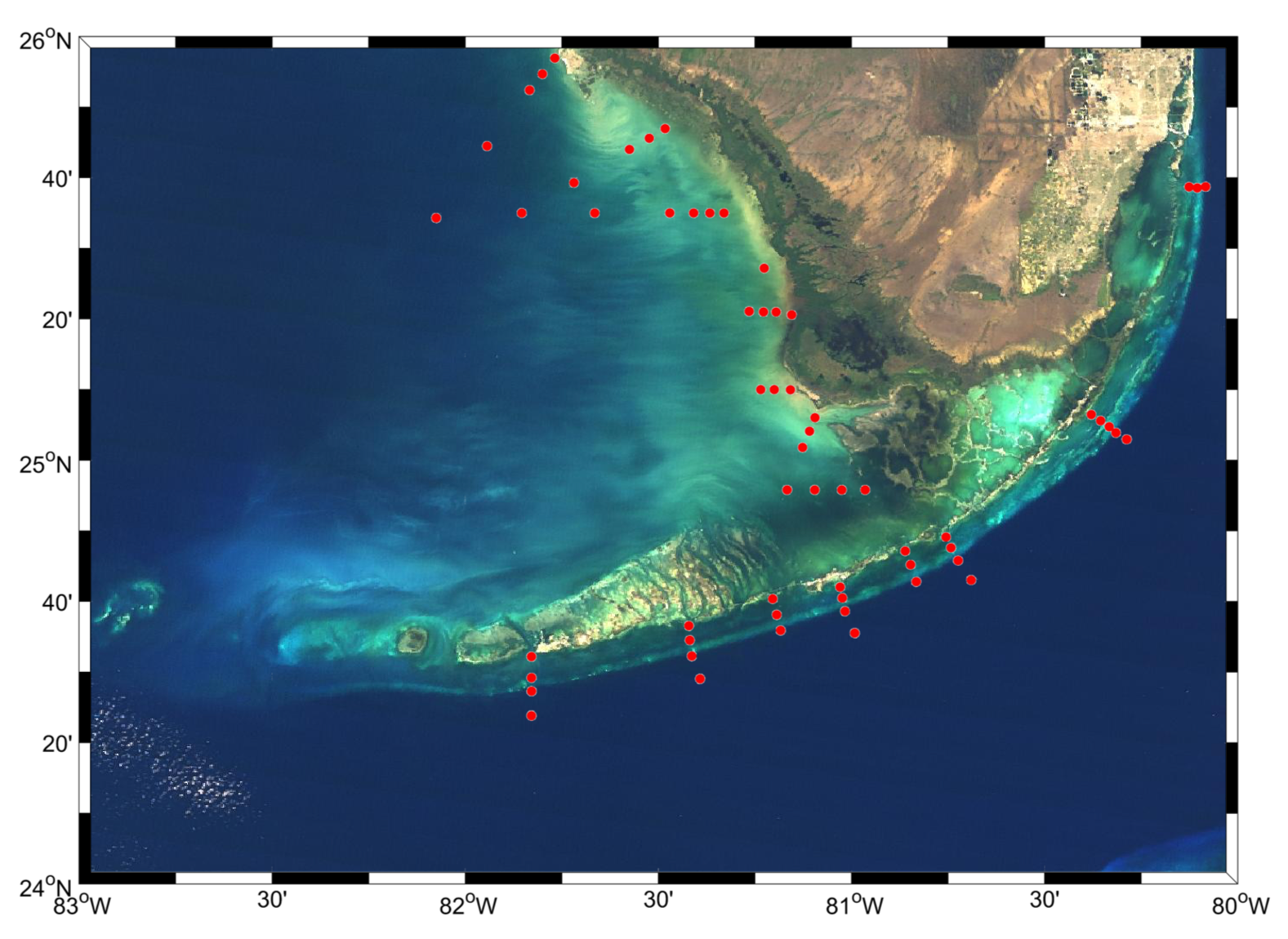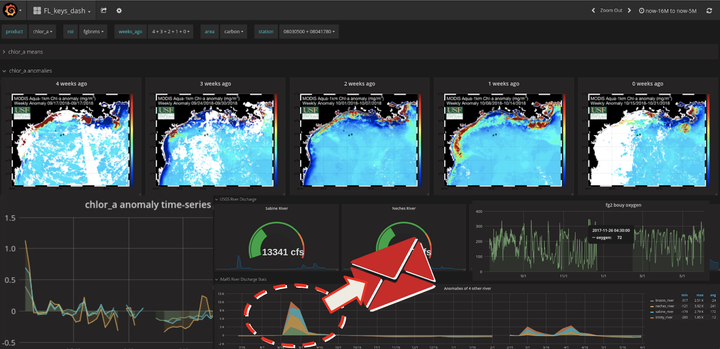MBON US - South Florida MBON
This MBON effort is structured to assess ecosystem integrity, advance protection of marine resources, and promote conservation. Specifically, we focus on the integration of ground and satellite observations related to biodiversity to inform ecosystem-based management in and around the FKNMS. This includes supporting the regional NOAA Integrated Ecosystem Assessment (IEA), the National Marine Fisheries Southeast Fisheries Science Center, the FKNMS, Rookery Bay National Estuarine Research Reserve (NERR), and the State of Florida Fish and Wildlife Commission (FWC) as specific end users of an MBON.
S FL MBON Activities
- A close partnership with NOAA AOML and the Florida Keys National Marine Sanctuary (FKNMS) has focused on periodic MBON surveys of the Florida Keys since 2014.
- bimonthly research cruises circumnavigating the FKNMS
- Additional partners now add animal tracking and other dimensions to the Sanctuaries MBON.
- The Animal Telemetry Network (ATN) has documented seasonal and other hotspots of animal accumulations.
- An interactive infographic building framework has been developed - Infographiq has been published both as an R library and a javascript library.
- This infographic of the FKNMS status using IEA indicators is one example developed using infographiq.
- Data continues to be added to the MBON Data Portal developed by Axiom Data Science
- The MBON Early-Alert Dashboards framework has been developed as a general-purpose system for monitoring an ecosystem using data from bouys and satellite data, leveraging open data published in ERDDAP and open source tools such as grafana and apache airflow. Developed dashboards include
- A FWC-supported dashboard for exploration of Stony Coral Tissue Loss Disease spread
- A FKNMS monitoring dashboard focused on monitoring of water quality.
- A FGNMS dashboard focused on monitoring anoxic dieoff events caused by river plumes.
- Zooplankton collected from research cruises is being openly published via the Darwin Core Standard to OBIS.
- Zooplankton as microscopically identified by a zooplankton taxonomist from net-tow samples.
- Zooplankton occurrences detected from eDNA water samples.
- S FL MBON members have contributed to multiple publications, some of which are listed here.

Geographic domain of the South Florida MBON project.
Red dots indicate stations sampled 6 times per year during cruises in collaboration with NOAA’s South Florida Program, led by the Atlantic Oceanographic and Meteorological Laboratory (SFP-AOML) aboard the R/V Walton Smith.
Image shown is a Red-Green-Blue composite from MODIS-Terra collected on March 1, 2014.

An annotated screenshot of the Early Alert Dashboard interface showing satllite imagery and time-series data which can be used to detect events and send alert emails to resource managers.

Screenshot of an infographic develped using the infographiq library to create an interactive status report for the FKNMS.
S FL MBON objectives
- Further integrate and synthesize information from ongoing monitoring programs through the Integrated Ocean Observing System (IOOS).
- Refine details for practical marine Essential Biodiversity Variables (EBVs) and Essential Ocean Variables (EOVs); this includes:
- Advancing understanding of time-varying marine biogeography using Seascapes;
- Integrating traditional and new technologies to assess animal movement and ambient sounds to understand distribution of organisms and biodiversity hotspots; and
- Biodiversity assessments through emerging molecular methods.
- Integrate biodiversity measurements in a relational database.
- Establish a protocol for MBON information to dynamically update Sanctuary Condition Reports, NERR assessments, IEA, and FWC resource management needs.
- Serve as MBON Team Leader to link and coordinate national MBON efforts, and support and coordinate with international programs (Group on Earth Observations/ GEO BON, MBON, Blue Planet, and the International Oceanographic Commission/IOC: the Global Ocean Observing System/GOOS, the Ocean Biogeographic Information System/OBIS, the Ocean Best Practices System/OBPS, and others).